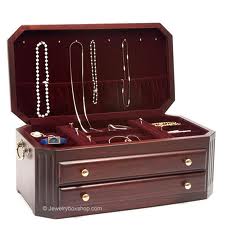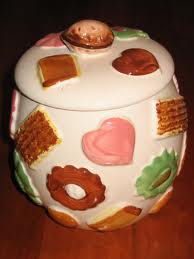The 10 Best Places to Hide Valuables in Your Home
Burglary is a crime of opportunity. And burglars don’t want to spend a lot of time looking through a home to find things of value to steal, which is why there are obvious locations that they always check. That means that there are ways to outsmart them by hiding your valuables in not-so-obvious places, and sometimes even in plain sight.
Depending on the size and type of item, the best places to hide valuables are those that burglars don’t want to search through or wouldn’t bother with, including places that are inconvenient or difficult to search, messy, or uninteresting.
Here Are the Top 10:
- hollowed-out books. Criminals tend to be uneducated, which is why they’ve turned to crime to make their living. They’re practically allergic to books! But if you have only a couple of books on a bookshelf, this may be a clue that they’re actually hiding places for your valuables, so make sure your library is large enough to serve as a tedious place to search.

- a false VHS tape or VHS carton. Who watches VHS tapes anymore? Again, follow the rules above for books. A few can be a clue, but many can be a time-consuming distraction.
- false containers in the kitchen cupboard, under the sink, and in the bathroom, such as fake food cans and boxes, false cleaning product bottles, and personal hygiene items, and even in a heavy tub of "cat litter." Some false containers available on the market today actually look like false containers, so you might want to save yourself the expense and create your own.

- in the false bottom or under the plastic liner of a bathroom or kitchen trash can. No one wants to go pawing through your trash in the slim hope of finding something worth pawning.
- wrapped in plastic and aluminum foil and stored in the back of the freezer. This is also a good place to store documents and paper currency in case of a house fire.
- in a floor safe in the bedroom closet. While this location may be obvious, a burglar would have to exert a lot of time and energy—and create a lot of noise—trying to break into a floor safe, which is also generally of the heavy variety, making it not only hard to open, but hard to steal whole, if the thief had plans to break into it later.
- inside a house plant. Using the same method as for trash containers, a plant’s soil can be contained in a waterproof liner that can be lifted up to hide items underneath. Just make sure the items you’re hiding are in a waterproof container, too.

- inside a false wall outlet. Make sure it’s not a live receptacle or in the way of any electrical wiring.
- within hollowed-out/removable building components, such as wainscoting, floor panels, door jambs, window sills, and cabinet doors.
- in the garage inside boxes marked with mundane labels, such as “Xmas Ornaments,” “Kid’s Clothes,” “School Projects,” etc. Again, the more boxes you have, the longer the burglar will have to search—if he’s so inclined—to find something worth stealing.
Hiding Places to Avoid:
- areas that can damage your valuables with water or invasive matter, such as the water tank of a toilet, inside a mayonnaise jar that still has mayonnaise in it, or a paint can filled with paint. There are high-quality waterproof containers on the market that will allow you to hide items in water (and possibly other places), but err on the side of caution. Documents, jewelry and electronics that become wet or permeated with chemicals or food matter may be damaged beyo
 nd repair in your zeal to outsmart a tenacious burglar.
nd repair in your zeal to outsmart a tenacious burglar. - a jewelry box. This is a good place to store jewelry that you can afford to lose, but not your diamond tennis bracelet or your grandmother’s antique wedding ring.
- your desk drawer, bedside drawer, or underwear drawer. Too obvious.
- inside CD cases. It’s true: burglars still prefer CDs to MP3s.
- inside DVD cases. DVDs and Xbox-type games are worth between $2 and $10 at pawn and re-sale shops; count on being cleaned out of your collection during a home burglary, regardless of the titles.
- a wall safe. Unless it’s high-end and professionally installed, a wall safe can be dislodged by cutting the drywall seam around it, and wall safes are typically small and light enough to easily transport off site to be opened later. Opt for the heavier and harder-to-access floor safe.
- inside picture frames with false backs/interiors. These tend to be thicker than ty
 pical picture frames, so they’re easy to spot as a hiding place.
pical picture frames, so they’re easy to spot as a hiding place. - a cookie jar. Put cookies in it, not your grocery money.
- an electrical item or heated area, such as a lamp base, toaster oven, or HVAC duct. You could accidentally ignite your valuables and put your entire home at risk for a house fire.
- any locked box or locking file cabinet. A box that has a lock on it will be stolen regardless of what’s inside, and the lock on a file cabinet can be popped out with the right tool and a little effort.
Other Precautions
For valuables that you can’t hide or lock up, such as a flat-screen TV, stereo system, and computers, make sure they’re insured through your homeowner’s or renter’s insurance. Unless you invest in a home security system (and sometimes even if you do), it’s not possible to protect every item in your home. But you can take precautions to password-protect and GPS-activate laptops and smartphones so that their recovery is more likely, should they be stolen.
Also, firearms should be properly locked in an approved gun safe that is stored out of reach for the safety of the home’s occupants, as well as to deter theft.
Place a pole in the bottom track of your sliding glass patio doors so that they can’t be forced open wide enough to permit the entry of an intruder. Install burglar-proof window locks that will allow you to leave your windows open slightly for fresh air, but not wide enough to allow a person to get through.
Remember that burglary is a crime of opportunity, so don’t tempt fate by leaving any exterior doors unlocked (including sliding glass patio doors, and the door between the garage and the living area), hiding a spare house key outdoors (under the “Welcome” mat, a large potted plant, statuary, or a solitary or fake rock), leaving the doors to your attached garage open (even when you’re home), or leaving the curtains or drapes open so that your valuables are in full view of prowlers and passersby. Your personal safety is at risk as much as your personal property.
Also, don’t over-share personal information with the world by advertising your absence from home on social media. When leaving on vacation, have a trusted neighbor, friend or family member monitor your home and bring in the newspaper, mail, and random take-out menus hung on your doorknob. Install light timers indoors and security/motion detectors outdoors to illuminate your property’s exterior. And go ahead and apply security company stickers to your windows/doors that advertise that your home is professionally protected, even if it’s not.

